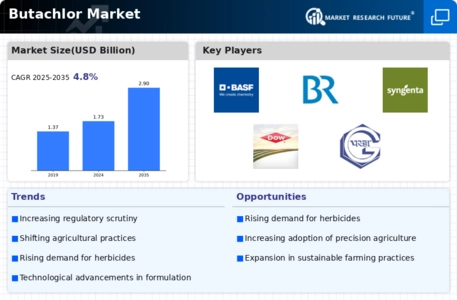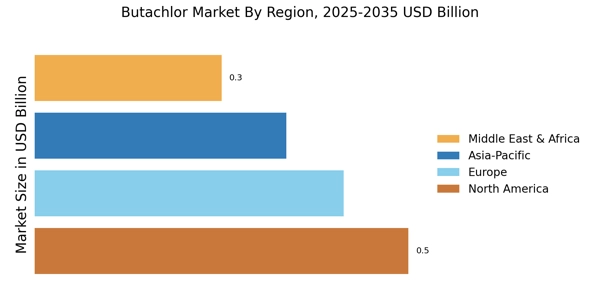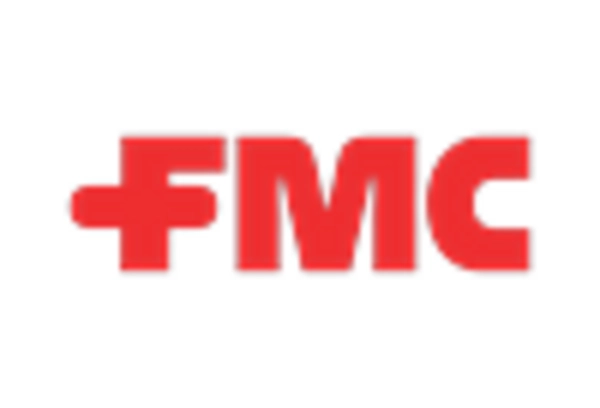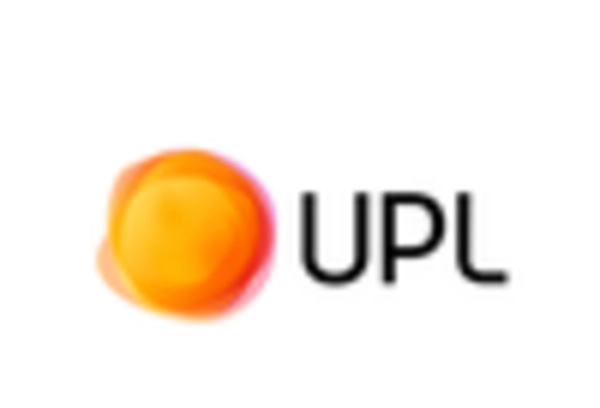Increasing Adoption of Herbicides
The Butachlor Market is experiencing a notable increase in the adoption of herbicides among farmers. This trend is primarily driven by the need for effective weed management in various crops, particularly in rice cultivation, where Butachlor Market is widely utilized. The herbicide's ability to control a broad spectrum of annual grasses and certain broadleaf weeds makes it a preferred choice. As agricultural practices evolve, the demand for efficient herbicides is projected to rise, with the Butachlor Market expected to witness a compound annual growth rate (CAGR) of approximately 4.5% over the next few years. This growth is indicative of the agricultural sector's ongoing efforts to enhance productivity and yield, thereby ensuring food security.
Regulatory Support for Herbicide Use
Regulatory support for the use of herbicides is a crucial driver for the Butachlor Market. Governments and agricultural bodies are increasingly recognizing the importance of herbicides in enhancing agricultural productivity. As regulations evolve to support the safe and effective use of herbicides, the Butachlor Market is likely to see a positive impact. This support may include the approval of new formulations and the establishment of guidelines that promote responsible usage. Furthermore, initiatives aimed at educating farmers about the benefits and proper application of Butachlor Market could further stimulate market growth. The alignment of regulatory frameworks with agricultural needs may create a conducive environment for the Butachlor Market to thrive.
Shift Towards Sustainable Agriculture
The shift towards sustainable agriculture is influencing the Butachlor Market in various ways. As consumers become more environmentally conscious, there is a growing demand for agricultural practices that minimize chemical usage while maintaining productivity. This trend is prompting farmers to seek herbicides that are effective yet environmentally friendly. Butachlor Market, with its targeted action and relatively low toxicity to non-target organisms, appears to align with these sustainability goals. The Butachlor Market may experience growth as farmers adopt practices that balance productivity with environmental stewardship. This shift could lead to the development of new formulations and application methods that enhance the sustainability of Butachlor Market usage in agriculture.
Rising Global Population and Food Demand
The rising global population is exerting pressure on the agricultural sector to increase food production, thereby impacting the Butachlor Market. As the population is projected to reach approximately 9.7 billion by 2050, the demand for food is expected to escalate. This scenario necessitates the use of effective herbicides like Butachlor Market to enhance crop yields and ensure food security. The Butachlor Market is likely to benefit from this trend, as farmers seek reliable solutions to combat weed competition in their fields. The increasing need for efficient agricultural practices to meet food demand may result in a heightened focus on herbicides, positioning Butachlor Market as a critical component in modern farming.
Technological Advancements in Agriculture
Technological advancements in agriculture are significantly influencing the Butachlor Market. Innovations such as precision farming and integrated pest management are being adopted to optimize the use of herbicides, including Butachlor Market. These technologies enable farmers to apply herbicides more efficiently, reducing waste and environmental impact. Furthermore, the development of formulations that enhance the efficacy of Butachlor Market is likely to drive its adoption. As farmers increasingly rely on technology to improve crop yields and manage resources effectively, the Butachlor Market is poised for growth. The integration of technology in agricultural practices may lead to a more sustainable approach, aligning with the industry's goals of reducing chemical usage while maintaining productivity.


















Leave a Comment